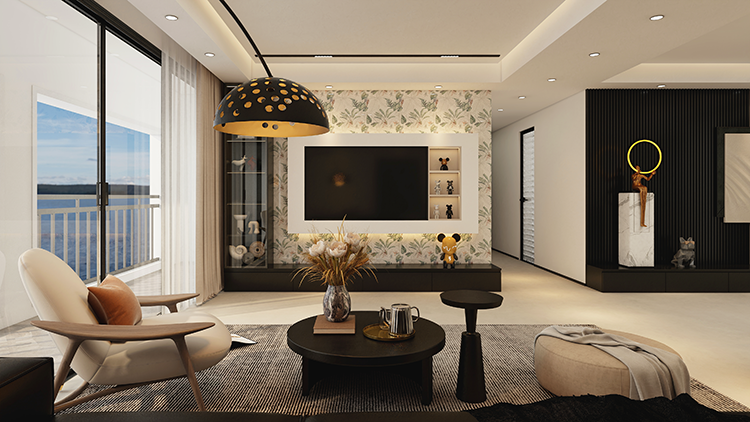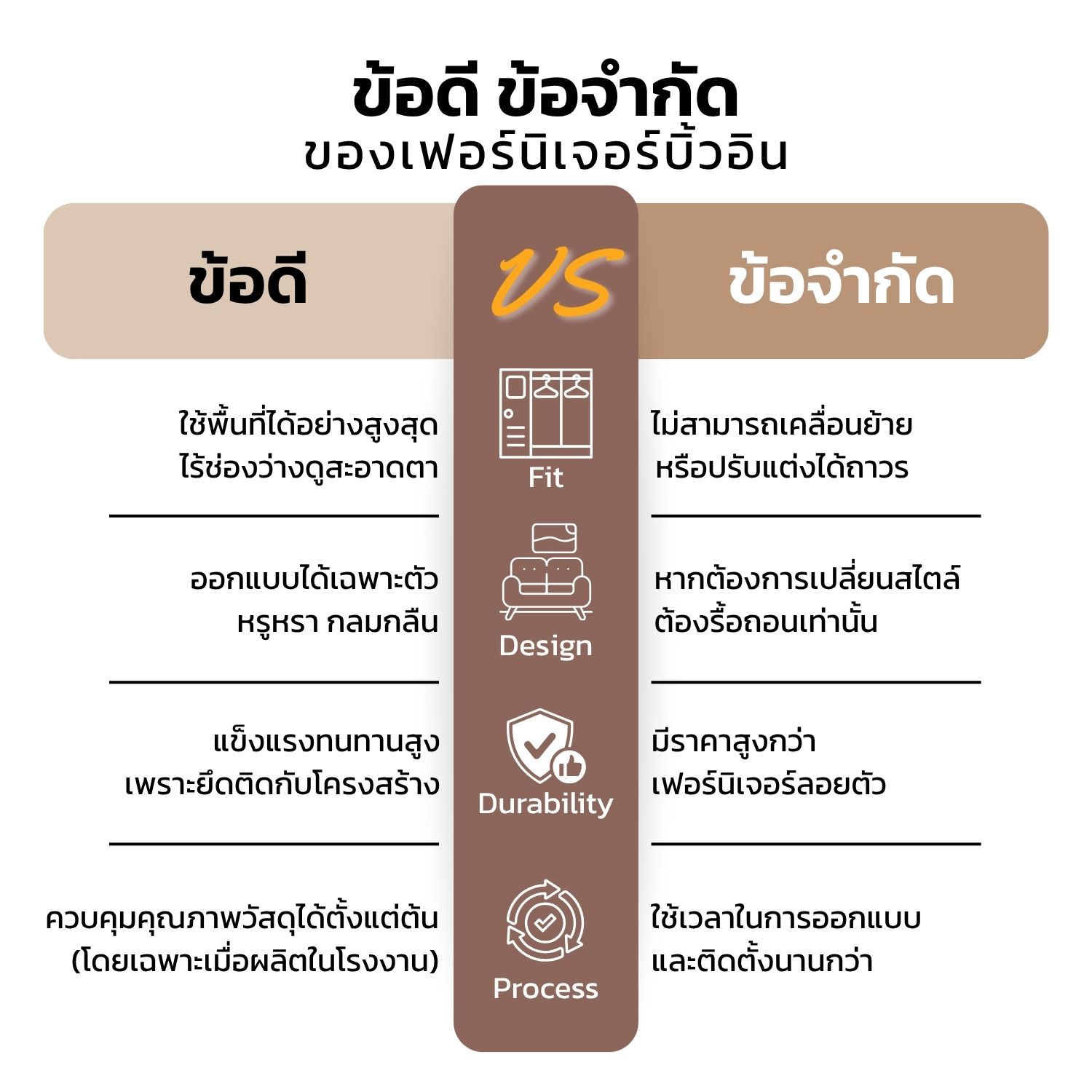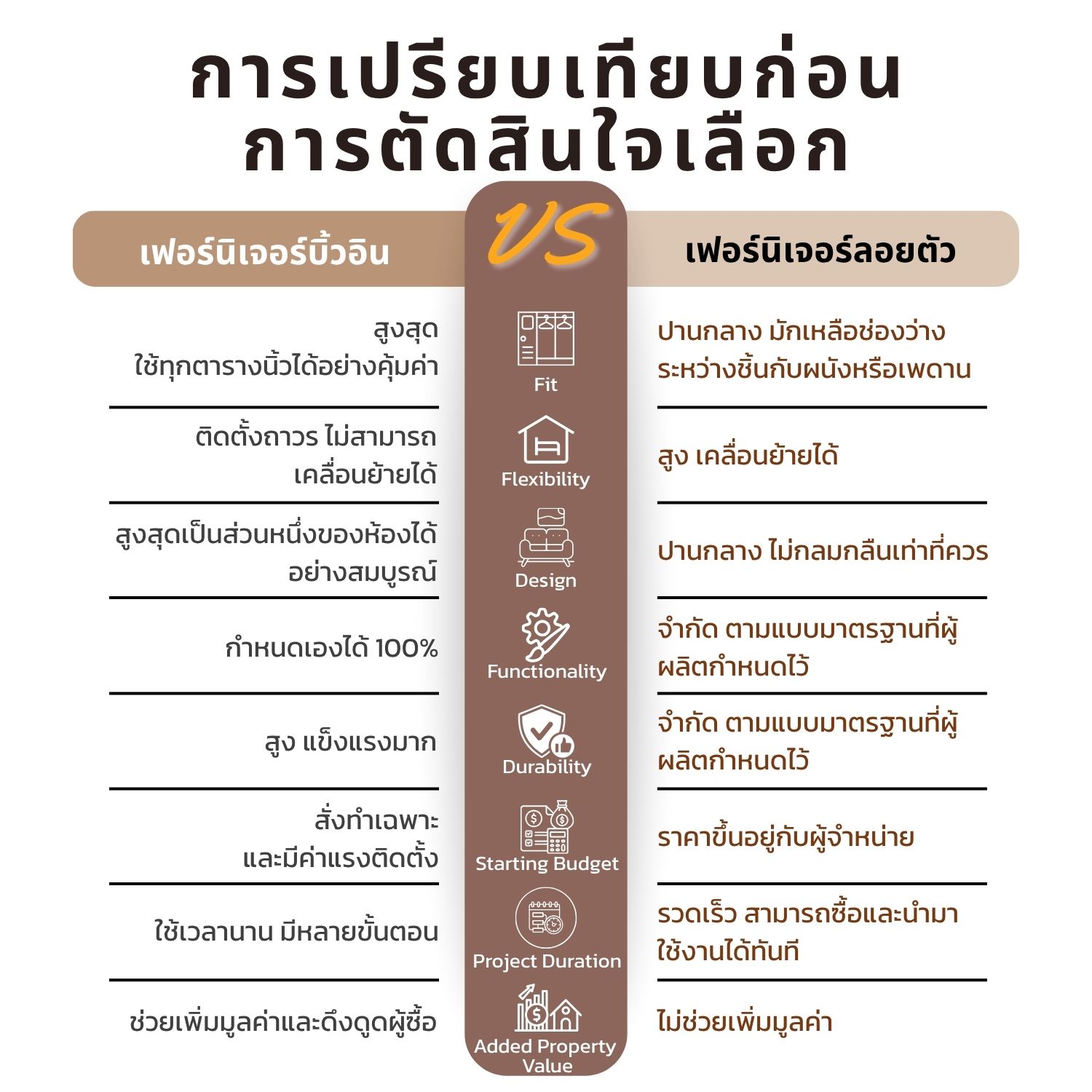Compare Built-in Furniture vs. Loose Furniture — Which One Fits Your Home Best?

Comparison Between Built-in Furniture and Loose Furniture Which One Fits Your Home Best?
Does your house or condo have awkward corners that seem unusable, or do you ever feel like somethings missing that prevents your space from feeling complete? These issues often start with choosing the wrong type of furniture for your space! Decorating your home isnt just about placing furniture around randomly it also requires efficient space planning and selecting furniture that complements your homes style.
When its time to decorate, youll face an important decision: choosing between built-in furniture sleek, custom-fitted, and perfectly measured or loose furniture flexible, movable, and more budget-friendly. Which one is the right choice for you? This article will explore the pros and cons of both types of furniture, covering space usage, functionality, design, and budget, so you can confidently decide which best suits your needs.

What Is Built-in Furniture?
Built-in furniture refers to furniture that is designed and installed as a permanent part of a buildings structure. Built-in furniture is typically custom-made to maximize the use of available space for example, wardrobes built into walls or kitchen counters fitted exactly to the rooms dimensions. Built-in design makes furniture an integral part of the space it cannot be moved once installed. Therefore, the design process involves high attention to detail to ensure the best fit and style.
Advantages and Limitations of Built-in Furniture
As mentioned earlier, built-in furniture is permanently attached to your homes structure. So before deciding, you should understand its pros, limitations, and precautions. Heres a breakdown:Advantages
Built-in furniture utilizes every inch of space, even tight corners or narrow spots where ready-made furniture wouldnt fit making it ideal for small rooms. This ensures optimal space usage, perfect for compact condos or limited areas.It can be designed to blend seamlessly with your homes style from color and material to function creating a unique and cohesive look. Since its based on actual measurements, designers can tailor it precisely to your lifestyle and needs.
Built-in furniture usually uses more durable materials and stronger installation methods than loose furniture. Because its permanently fixed to the buildings structure, it requires high-quality materials and meticulous craftsmanship.
Limitations
Built-in furniture costs more since its custom-made, involving design and installation fees and requiring skilled labor. This makes it more expensive than loose furniture.
It takes longer to produce and install from measuring and designing to manufacturing and final setup sometimes taking weeks or even months, depending on complexity.
Since its permanently attached to the structure, it cannot be moved or taken along when you relocate or wish to redecorate.

What Is Loose Furniture?
Loose furniture refers to ready-made furniture that can be easily purchased from stores or department stores such as sofas, beds, cabinets, and tables. These are factory-produced to standard sizes and designs, offering a wide variety of styles, sizes, and prices. They can be placed anywhere immediately, are easy to move, and are not fixed to the building.
Advantages and Limitations of Loose Furniture
Advantages
Loose furniture is more affordable, with a wide range of options across price points from budget-friendly to premium. You can easily find something within your budget.
Most loose furniture comes pre-assembled or in knock-down form with assembly instructions, so you can install it yourself without needing a professional. Many stores offer ready-to-ship options, so you can get your furniture quickly.
Since its not attached to the building, loose furniture is flexible easy to move or rearrange anytime you like. Its also convenient when moving homes.
Its mass-produced to standard sizes that fit most rooms, such as 80 cm, 120 cm, or 160 cm wide, making it easy to match and coordinate.
Limitations
Because loose furniture follows factory standard sizes, it may not fit your space perfectly leaving unused gaps or inefficient layouts.
Mass production also means less uniqueness. The designs may look generic or repetitive unless you invest more to customize or choose unique pieces.
The quality and durability vary by brand and material cheaper products tend to wear out faster compared to built-in furniture. If you want long-lasting pieces, you may need to invest more in high-quality materials and craftsmanship.
Comparison Table: Which One Suits You Best?

Tip
Choose built-in furniture if you want to maximize usable space especially in condos or small homes and desire a unified, customized design.
Choose loose furniture if youre on a budget, value flexibility, or enjoy frequently changing your homes layout and decor.
Summary
For larger homes, combining both furniture types can be ideal for example, using built-in wardrobes or storage to save space while keeping loose items like sofas or coffee tables for flexibility. Ultimately, theres no right or wrong choice only what best fits your lifestyle, budget, and preferences.
FAQ
What materials are used for built-in furniture?
MDF (Medium Density Fiberboard): the most affordable option, but not moisture- or termite-resistant.
HMR (High Moisture Resistance Board): better moisture resistance, ideal for kitchens and bathrooms.
Plywood: strong, durable, and flexible suitable for structural work.
Plaswood: synthetic material that is 100% water- and termite-resistant but more expensive.
How long does it take to make built-in furniture?
Typically around 68 weeks or longer, from start to final installation and delivery, depending on design complexity and details.
Does built-in furniture increase a propertys value?
Yes. High-quality built-in work enhances beauty, functionality, and uniqueness increasing rental or resale value compared to properties without it.
Should I choose finished or knock-down loose furniture?
Finished furniture is sturdier and ready to use immediately but more expensive.
Knock-down furniture is cheaper and easier to transport but may be less durable and requires self-assembly.
What materials are commonly used for loose furniture?
Particle board and MDF: most common and cheapest materials for mass production.
Plywood: stronger and more durable but higher in cost.
Solid wood: most expensive but highly durable and aesthetically appealing.
Is loose furniture easier to clean than built-in?
Yes, since it can be moved to clean underneath or behind easily. However, these areas also tend to accumulate dust more quickly.




